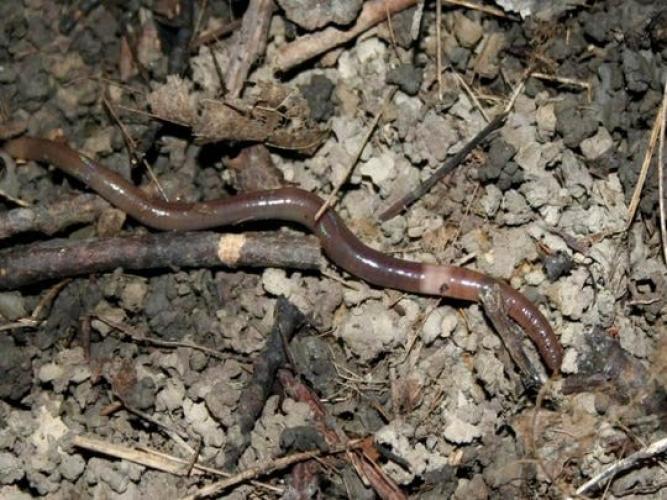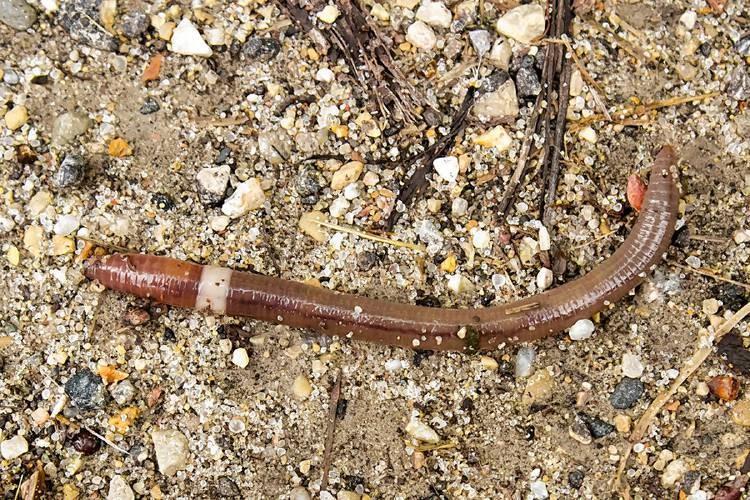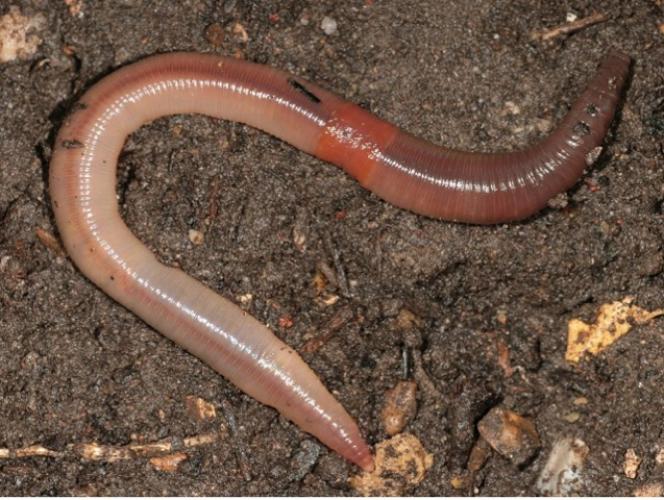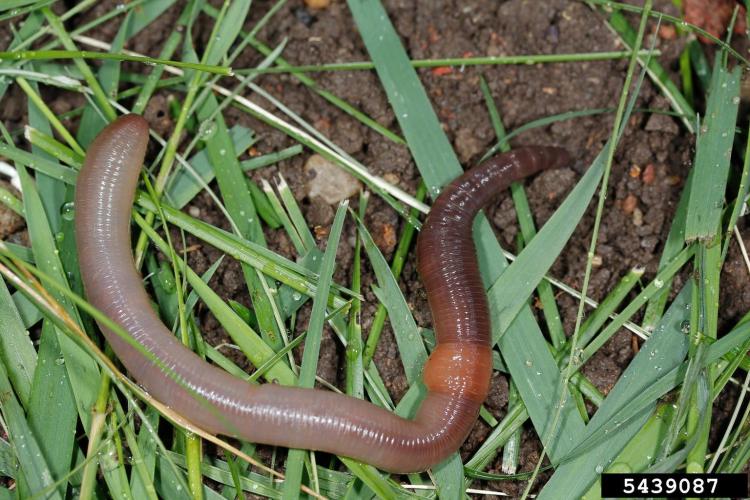Jumping Worms
Identification
Jumping worms are also known as crazy snake worms, crazy worms, snake worms, Asian worms, Alabama Jumpers, Georgia Jumpers, Jersey Wriggles, or wood alves.
There are three species of jumping worms found in Vermont.
- Amynthas tokionensis, 1-4 inches in length, approximately 70% of VT jumping worm population.
- Amynthas agrestis, 3.5-5" inches in length, approximately 25% of VT jumping worm population.
- Metaphire hilgendofri, 4-8" inches in length, approximately 5% of VT jumping worm population.
Keys to Identification of Jumping Worms:
- Smooth, glossy dark gray/brown color.
- Clitellum (the ring of lighter-colored tissue around the body near the head) is cloudy-white to gray; completely encircles the body. Its surface is smooth and flush with rest of body.
- Bodies are firm and not coated in “slime”.
- When handled or poked they thrash violently, and may jump into the air or even shed their tails.
- They tend to occur in large numbers; where there’s one, there are always more.
- Soil becomes grainy as it is displaced with castings that are granular and look like coarsely ground coffee.
Visit the Wisconsin Department of Natural Resources for a comparison chart of Jumping worms vs. European Nightcrawlers.
A simplified key to the three most dominant species in Vermont can be found here. Look for slide 7 on the NBNC - Reporting the Worms -1 presentation. Note that this only an approximate key.
Biology
Origin
- All earthworms in Vermont are non-native. There are 19 species of earthworms known to occur throughout the state.
- Approximately 12,000 years ago Vermont was covered by glacial ice. This event removed any native earthworms which may have evolved with our forests.
- Earthworms were inadvertently imported from Europe & Asia with soil and plant materials. They have continued to be imported purposefully as fishing bait and for use in gardens and composting.
Habitat
- These species live at the surface in the leaf litter, but may also move into the top 5 cm of the mineral soil.
Life Cycle
The lifecycle of jumping worms is very different from that of European earthworms.
- Adults live through only one growing season and die in winter, but their larvae overwinter as small cocoons in the soil or leaf litter.
- There are always some larvae ready to hatch in the cocoons. Those that are ready hatch at 50 degrees Fahrenheit which can happen even during January thaw. As of April, the hatchlings survive and develop to a mature adult within 60 to 90 days.
- Once fully mature, each worm begins to produce cocoons. Jumping worms are mostly parthenogenetic so that it only takes one worm to found a new colony. Each worm produces about 1 cocoon every other day enough to bring juvenile numbers to a peak ranging from 180 to 300 per square meter (20 to 33 per square foot).
- Populations grow rapidly, reaching peak abundance in late summer/early fall, outcompeting other species.
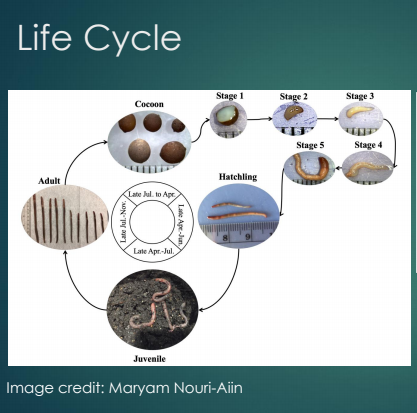
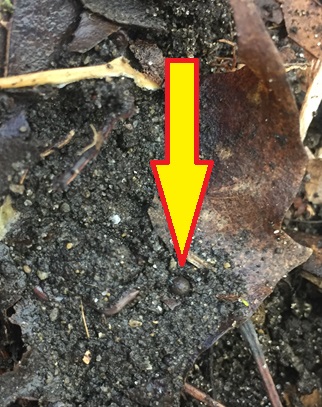
A cocoon is shown at the center of the image. The cocoons of these earthworms blend into the casting layer both in size and color.
Ecological Threat
- Alteration of soil temperature, chemistry and moisture.
- Reduction of forest floor organic matter & herbaceous layer.
- Alteration of soil can affect seed banks.
- Change in forest habitat structure, possibly affecting salamanders, birds and the maple sugar industry.
- Demise of lawns due to abundant castings have been reported in Connecticut.
- Garden plants may show signs of wilt that indicate drought despite enough moisture.
- Their presence may facilitate the spread of invasive plant species.
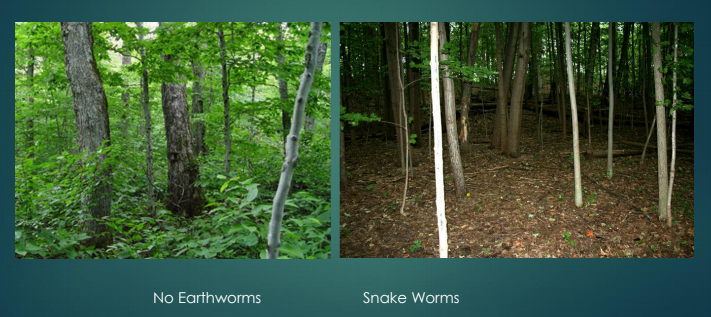
Vermont Distribution
Jumping worms are confirmed in all Vermont counties with the exception of Essex and Orleans. Visit iNaturalist to see mapped infestations and report observations.
How You Can Help
- Learn to recognize Jumping Worms.
- Arrive clean, leave clean. Remove soil and debris from vehicles, equipment, footwear and personal gear before going to and from work and recreational areas.
- Avoid practices that spread earthworms into untreated soil or compost:
- Nursery plants and trees with root balls should be inspected before planting.
- Plant bare root stock or seeds when possible.
- Do not buy pheretimoid worms for composting, vermicomposting, gardening or bait.
- Sell, purchase or trade only compost and mulch that was heated to appropriate temperatures and duration following protocols that reduce pathogens.
- Report observations on iNaturalist.
Citations
Photo Credit
Josef Gorres, UVM
Maryam Nouri-Aiin, UVM
Joseph Berger, Bugwood.org
Information Credit
Wisconsin Department of Natural Resources
University of Wisconsin- Madison Arboretum
Robilee Smith, UVM Extension Master Gardener Helpline Volunteer
